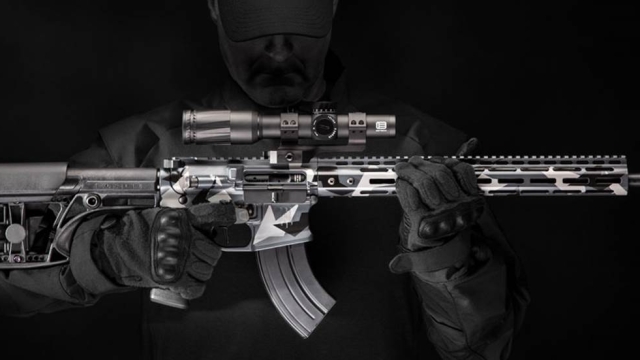Firearms have been a subject of intense debate and controversy for years, with strong opinions on both sides. These weapons, which rely on ammunition to function, have played a significant role throughout history, impacting society, politics, and personal safety. While some praise firearms for their potential for self-defense and sporting purposes, others argue for stricter regulations to prevent misuse and violence. In this article, we will delve into the world of firearms, examining their various types, their impact on society, and the ongoing debates surrounding their ownership and use. From hunting rifles to handguns and from military-grade weapons to antique firearms, the diverse range of arms represents a complex and multifaceted aspect of our modern world. Join us as we explore the multifaceted, intricate world of firearms.
History and Evolution of Firearms
Firearms have a long and intriguing history, dating back centuries. These powerful weapons have played a significant role in human warfare and hunting traditions. From their humble beginnings to the sophisticated firearms of today, the evolution of these tools has been nothing short of remarkable.
The journey of firearms started with the invention of gunpowder in China during the 9th century. Initially, gunpowder was used for medicinal and mystical purposes. However, it wasn’t long before its combustible nature caught the attention of military strategists. They soon realized the potential for creating weapons that could propel projectiles with great force.
It was during the 13th century that the world witnessed the emergence of the first firearms. These early versions were known as "fire lances" and consisted of a bamboo tube filled with gunpowder and attached to a projectile. When ignited, these primitive firearms would produce a burst of fire and propel the projectile towards the target.
Over time, advancements in technology led to the development of more sophisticated firearms. The introduction of metal barrels and the invention of the flintlock ignition system in the 17th century marked significant milestones in firearm design. These innovations improved accuracy, reliability, and brought about a new era of firearms.
The Industrial Revolution in the 18th and 19th centuries further revolutionized firearms production. Mass production techniques allowed for the creation of firearms on a much larger scale, leading to their widespread availability. This accessibility, however, also raised concerns about their potential misuse and the need for regulations.
While the history of firearms is undeniably fascinating, it is important to recognize the controversial nature of these weapons. The evolution of firearms has given rise to debates about gun control, self-defense, and the overall safety of society. Understanding their history provides valuable insights into the development and impact of firearms on our world today.
2. Types of Ammunition
In the world of firearms, different types of ammunition play a crucial role in determining the performance and effectiveness of the weapon. Understanding the various types of ammunition available is essential for firearm enthusiasts and professionals alike. Let’s explore three common types of ammunition used in firearms.
-
Full Metal Jacket (FMJ) Ammunition:
Full Metal Jacket ammunition, commonly referred to as FMJ, is one of the most widely used types of ammunition. It features a soft lead core surrounded by a harder metal, typically copper or brass. The outer metal coating covers the entire bullet, except for the base. FMJ rounds are known for their stable flight and penetration capabilities. These rounds are often used by target shooters and in military applications. -
Hollow Point (HP) Ammunition:
Hollow Point ammunition gets its name from the hollowed-out cavity located at the tip of the bullet. This design enables the bullet to expand upon impact, creating a larger wound channel. The expansion of the bullet increases the stopping power and reduces the risk of over-penetration. Hollow Point ammunition is popular among law enforcement agencies and self-defense enthusiasts due to its effectiveness in stopping a threat quickly. -
Armor-Piercing (AP) Ammunition:
Armor-Piercing ammunition is specifically designed to penetrate armored targets. It features a hardened steel or tungsten carbide penetrator at the core, often surrounded by a copper or steel jacket. AP rounds are primarily used by military and law enforcement personnel in situations where penetrating heavy armor is crucial. However, the use of AP ammunition is highly regulated in many jurisdictions due to its potential for misuse.
Understanding the different types of ammunition available for firearms is essential for informed decision-making and safe usage. Whether it’s for target practice, self-defense, or specialized applications, selecting the right ammunition is crucial for achieving the desired results.
3. Controversies Surrounding Firearms
-
Ammunition Control:
One of the major controversies surrounding firearms relates to the control and regulation of ammunition. Advocates for strict ammunition control argue that limiting access to ammunition can help reduce gun violence by making it harder for individuals to obtain the necessary resources to commit crimes. On the other hand, opponents argue that restricting ammunition access infringes upon the rights of law-abiding citizens and may not effectively address the root causes of gun violence. -
Firearm Legislation:
The ongoing debate over firearm legislation is another significant controversy in the world of firearms. Proponents of stricter gun laws argue that tighter regulations can help prevent mass shootings and other acts of violence. They believe that background checks, waiting periods, and restrictions on certain types of firearms can make a difference in curbing gun-related incidents. However, opponents argue that such measures infringe upon the Second Amendment rights of individuals and that existing laws should be properly enforced instead. -
Self-defense vs. Public Safety:
The balance between an individual’s right to self-defense and the overall safety of society is yet another contentious issue when it comes to firearms. Some argue that widespread gun ownership allows individuals to protect themselves and their loved ones from immediate threats, while others contend that more guns in circulation increases the likelihood of accidents, domestic violence incidents, and even unintentional harm. Striking the right balance between personal protection and public safety remains a hotly debated topic within the firearms community.
These three paragraphs highlight some of the significant controversies surrounding firearms, including ammunition control, firearm legislation, and the balance between self-defense and public safety. The discussions around these topics remain complex and often elicit strong emotions from proponents on both sides of the arguments.







